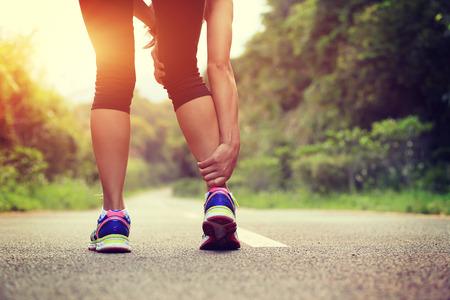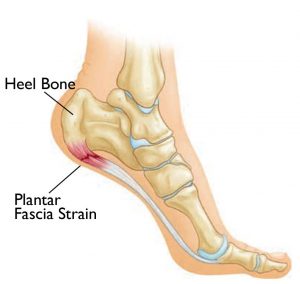
Podiatry Problems That Can Affect Runners
Whether you are a seasoned runner or a beginner, there are a number of injuries and problems that can occur in the foot, ankle and lower limb. Often these problems occur because of biomechanical issues in the foot, for example flat feet or high arches. Your feet are like a platform that supports the rest of your body, and if your platform is out of alignment then it can affect the structures above, the ankle, knees, hips and lower back.
Common problems when running:
 SHIN PAIN
SHIN PAIN
This is often referred to as shin splints, but the proper name is Medial Tibial Stress Syndrome (MTSS). This condition causes pain in the lower third of the inside of the shin bone when running and can be severely debilitating. In general, shin splints develop when the muscle and bone tissue (periosteum) in the leg become overworked by repetitive activity.
Chronic presentations are more likely in females, those with a running history of less than 5 years, increased body mass index, larger calf girth, increased hip rotation and standing foot pronation ( rolling in of the arch).
It is important to see your podiatrist to get a correct diagnosis to rule out muscle hernia, stress fracture and chronic exertional compartment syndrome which all have similar symptoms, but are much more serious.
Treatment will include REST, anti-inflammatory medication, icing and orthoses ( insoles), and a gradual return to running.
Before returning to exercise, you should be pain-free for at least 2 weeks. Keep in mind that when you return to exercise, it must be at a lower level of intensity. You should not be exercising as often as you did before, or for the same length of time.
Be sure to warm up and stretch thoroughly before you exercise. Increase training slowly. If you start to feel the same pain, stop exercising immediately. Use a cold pack and rest for a day or two. Return to training again at a lower level of intensity. Increase training even more slowly than before.
 HEEL PAIN
HEEL PAIN
There are several conditions that can cause heel pain, the most common one we see is plantar fasciitis.
Plantar fasciitis is a condition which can cause heel pain. It happens when the strong band of tissue on the sole of your foot (fascia) becomes irritated, after repetitive use or due to poor foot posture. Most commonly it occurs in one foot but is possible to have it in both feet at the same time.
The main symptoms of plantar fasciitis are:
• Pain or tenderness in the heel or arch of the foot
• Pain with initial steps in the morning or after a period of rest
• Walking short distances may improve pain but longer distances may increase the symptoms again
• Pain with sudden stretching of the sole of the foot. This could include going up on your toes or upstairs
• Pain with prolonged standing or when wearing flat or unsupportive footwear
Common causes of plantar fasciitis
• Poor cushioning or poor arch support in your shoes.?• Tightness in calf muscle.?• Poor foot posture.?• Being on your feet for long periods of time, especially on hard surfaces.?• Being overweight
Treatment involves, stretching, icing, exercises, correct footwear and rest.
See your podiatrist for advice on individual treatments for your plantar fasciitis and to check that you do have this condition.
Other problems that we deal with are knee pain, Achilles pain, muscle strains, stress fractures & Morton’s neuroma to name but a few.
FOOTWEAR
Trainers are very important when running. There are different types of running shoes for different foot types, so If you have any running injuries make an appointment to see us, so we can advise and treat your individual injuries and give footwear advice.



